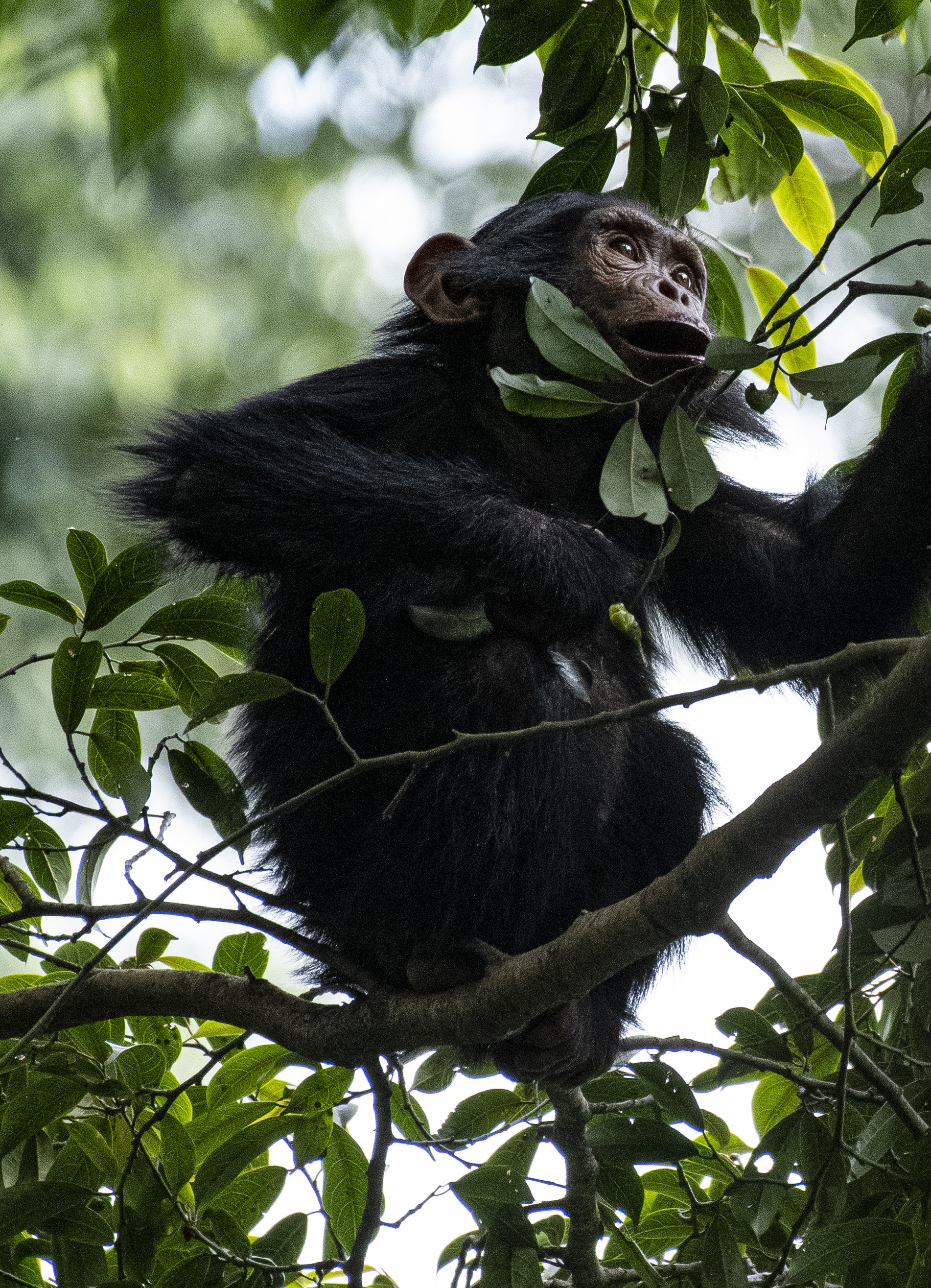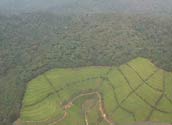Nyungwe Forest Reserve on:
[Wikipedia]
[Google]
[Amazon]


 The Nyungwe Forest () is located in southwestern
The Nyungwe Forest () is located in southwestern
 *
*


 The Nyungwe Forest () is located in southwestern
The Nyungwe Forest () is located in southwestern Rwanda
Rwanda (; rw, u Rwanda ), officially the Republic of Rwanda, is a landlocked country in the Great Rift Valley of Central Africa, where the African Great Lakes region and Southeast Africa converge. Located a few degrees south of the Equator ...
, on the border with Burundi
Burundi (, ), officially the Republic of Burundi ( rn, Repuburika y’Uburundi ; Swahili language, Swahili: ''Jamuhuri ya Burundi''; French language, French: ''République du Burundi'' ), is a landlocked country in the Great Rift Valley at the ...
, where it is contiguous with the Kibira National Park
The Kibira National Park (french: Parc national de Kibira) is a national park in northwestern Burundi. Overlapping four provinces and covering , Kibira National Park lies atop the mountains of the Congo-Nile Divide. It extends north from the provi ...
to the south, and Lake Kivu and the Democratic Republic of the Congo to the west. The Nyungwe rainforest is probably the best preserved montane rainforest in Africa. It is located in the watershed between the basin of the river Congo to the west and the basin of the river Nile to the east. From the east side of the Nyungwe forest comes also one of the branches of the Nile sources.
Nyungwe National Park was established in 2004 and covers an area of approximately of rainforest
Rainforests are characterized by a closed and continuous tree canopy, moisture-dependent vegetation, the presence of epiphytes and lianas and the absence of wildfire. Rainforest can be classified as tropical rainforest or temperate rainfores ...
, bamboo, grassland, swamp
A swamp is a forested wetland.Keddy, P.A. 2010. Wetland Ecology: Principles and Conservation (2nd edition). Cambridge University Press, Cambridge, UK. 497 p. Swamps are considered to be transition zones because both land and water play a role in ...
s, and bog
A bog or bogland is a wetland that accumulates peat as a deposit of dead plant materials often mosses, typically sphagnum moss. It is one of the four main types of wetlands. Other names for bogs include mire, mosses, quagmire, and muskeg; a ...
s. The nearest town is Cyangugu, to the west. Mount Bigugu
Mount is often used as part of the name of specific mountains, e.g. Mount Everest.
Mount or Mounts may also refer to:
Places
* Mount, Cornwall, a village in Warleggan parish, England
* Mount, Perranzabuloe, a hamlet in Perranzabuloe parish, ...
() is located within the park borders. In October 2020, the Rwanda Development Board
Rwanda Development Board (RDB), is a government department that integrates all government agencies responsible for the attraction, retention and facilitation of investments in the national economy.
Location
The headquarters of RDB are located on K ...
signed an agreement with African Parks
African Parks is a non-governmental organization (NGO) focused on conservation, established in 2000 and headquartered in Johannesburg, South Africa. It was founded as the African Parks Management and Finance Company, a private company, then under ...
to assume management of Nyungwe National Park for an initial 20 years.
Animal life
The Nyungwe forest has a wide diversity of animal species, making it a priority for conservation in Africa. The forest is situated in a region in which several large-scale biogeographical zones meet and the variety of terrestrial biomes provides a great span of microhabitats for many different species of plants and animals. The park contains 13 primate species (25% of Africa's total), 275 bird species, 1068 plant species, 85 mammal species, 32 amphibian and 38 reptile species. Many of these animals are restricted-range species that are only found in theAlbertine Rift montane forests
The Albertine Rift montane forests is a tropical moist broadleaf forest ecoregion in east-central Africa. The ecoregion covers the mountains of the northern Albertine Rift, and is home to distinct Afromontane forests with high biodiversity.
Geo ...
ecoregion in Africa. In fact, the number of endemic species found here is greater than in any other forest in the Albertine Rift Mountains
The Albertine Rift is the western branch of the East African Rift, covering parts of Uganda, the Democratic Republic of the Congo (DRC), Rwanda, Burundi and Tanzania.
It extends from the northern end of Lake Albert to the southern end of Lake Tan ...
that has been surveyed. The forest, which reaches its maximum altitude of 3000 meters above sea level, is of particular interest for the presence of colonies of chimpanzee
The chimpanzee (''Pan troglodytes''), also known as simply the chimp, is a species of great ape native to the forest and savannah of tropical Africa. It has four confirmed subspecies and a fifth proposed subspecies. When its close relative th ...
s (''Pan troglodytes'') and Angola colobus (''Colobus angolensis''), the latter now extinct in Angola for the intense hunt to which they were subjected.
Primate species
 *
*Common chimpanzee
The chimpanzee (''Pan troglodytes''), also known as simply the chimp, is a species of Hominidae, great ape native to the forest and savannah of tropical Africa. It has four confirmed subspecies and a fifth proposed subspecies. When its close r ...
(''Pan troglodytes'')
* Ruwenzori colobus (''Colobus angolensis ruwenzori'')
* L'Hoest's monkey (''Cercopithecus l'hoesti'')
*Silver monkey
The silver monkey (''Cercopithecus doggetti'') is a species of Old World monkey found primarily in East Africa. Its range includes Burundi, Tanzania, Rwanda, Uganda, and the Democratic Republic of the Congo. The silver monkey was previously consi ...
(''Cercopithecus doggetti'')
*Golden monkey
The golden monkey (''Cercopithecus kandti'') is a species of Old World monkey found in the Virunga volcanic mountains of Central Africa, including four national parks: Mgahinga, in south-west Uganda; Volcanoes, in north-west Rwanda; and Vi ...
(''Cercopithecus kandti'')
*Hamlyn's monkey
The Hamlyn's monkey (''Cercopithecus hamlyni''), also known as the owl-faced monkey, is a species of Old World monkey that inhabits the bamboo and primary rainforests of the Congo. This species is exceedingly rare and known only from a few spec ...
(''Cercopithecus hamlyni'')
* Red-tailed monkey (''Cercopithecus ascanius'')
*Dent's mona monkey
Dent's mona monkey (''Cercopithecus denti'') is an Old World monkey in the family Cercopithecidae found in the Democratic Republic of the Congo, the Congo, Rwanda, western Uganda, and the Central African Republic. It was previously classified ...
(''Cercopithecus denti'')
* Vervet monkey (''Chlorocebus pygerythrus'')
* Olive baboon (''Papio anubis'')
*Grey-cheeked mangabey
The grey-cheeked mangabey (''Lophocebus albigena''), also known as the white-cheeked mangabey, is an Old World monkey found in the forests of Central Africa. It ranges from Cameroon down to Gabon. The grey-cheeked mangabey is a dark monkey, looki ...
(''Lophocebus albigena'')
History
Nyungwe Forest Reserve was established in 1933 by the Belgian colonial government. In the 1920s the colonial government had become concerned about the accelerating conversion of forest to pasture. The laws governing Rwanda's forest reserves prohibited clearing forests for agriculture, but maintained community rights to cut and collect firewood, and permitted commercial exploitation of valuable hardwood timber. Enforcement was lax, and local people continued to use the forest for hunting, honey collection, woodcutting, subsistence farming, and gold mining. Rwanda became independent in 1962, and the country's forest reserves were managed by the Ministry of Agriculture. From 1958 to 1973, Nyungwe Forest was reduced by over 150 km² due to fires, woodcutting, hunting of animals, and small-scale agriculture. NearbyGishwati
Gishwati Forest is a forest in the north-western part of Rwanda, not far from Lake Kivu. It is part of Gishwati–Mukura National Park. The area's forests were largely intact in 1978, and substantial forest cover still remained in 1986.
During t ...
and Virunga forests were cut in half at this time. In 1969, elephants still numbered in the hundreds in Nyungwe. In 1974, the last buffalo was killed in Nyungwe by hunters. In 1984, Nyungwe was divided into areas that allow for sustainable use and harvesting of timber. The Government of Rwanda developed a plan for a buffer zone that can still be seen today. In 1984, biodiversity surveys conducted by the Wildlife Conservation Society (WCS) with RDB documented colobus in groups of up to 400 members—an unheard of phenomenon. In 1987, development of the trail system began at Uwinka. In 1994, war and genocide devastated the country and destroyed many of the research and tourist facilities in Uwinka. Most senior staff were forced to flee, but many junior staff members at Nyungwe stayed on to protect the park. The park began to rebuild in 1995, but security and stability were still uncertain. In 1999, the last elephant in Nyungwe was killed in the swamp by poachers.
In 2005, the Rwandan Government made Nyungwe an official National Park, giving it protected status, the highest level of protection in the country.
References
* * *External links
* * {{authority control Western Province, Rwanda National parks of Rwanda Forests of Rwanda Protected areas established in 2004 Albertine Rift montane forests Southern Province, Rwanda